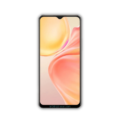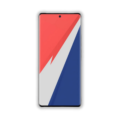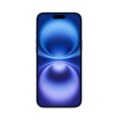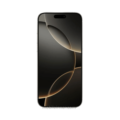- Home
- All Phones
- VIVO
- iQOO Neo 7
iQOO Neo 7

Full specification
General
| Device Type | Smart Phone |
| Model | I2214 |
| Released | 2023, February 16 |
Design
| Dimensions | 164.8 x 76.9 x 8.6 mm |
| Weight | 193 g |
| Build | Glass front, plastic back, plastic frame |
| IP Rating | No |
| Colors | Interstellar Black, Frost Blue |
Display
| Display Type Display Technology => A number of display technologies and types used in mobile phones => TFT (Thin Film Transistor), IPS (In-Place Switching), OLED (Organic Light Emitting Diode), AMOLED (Active-Matrix Organic Light-Emitting Diode), Super AMOLED (an even advanced version of AMOLED), Resistive Touchscreen (Resistive touchscreens contain two layer of conductive material with a very small gap between them which acts as a resistance), Capacitive Touchsceen (Capacitive touchscreen technology consists of a layer of glass coated with a transparent conductor) | AMOLED, 120Hz |
| Size | 6.78 inches |
| Resolution | FHD+, 1080 x 2400 pixels |
| Pixel Density Pixel Density (PPI) is refers to the concentration of pixels on a particular display, measured in pixels per inch (ppi). Pixel density is calculated by dividing the diagonal pixel resolution of a display by its diagonal size, higher pixel density better display quality. | 388 ppi |
| Protection Display Protection => Gorilla Glass is a special alkali-aluminosilicate glass shield with exceptional damage resistance that helps protect mobile displays from scratches, drops, and bumps of everyday use, It is always better to go for a smartphone with Gorilla Glass for that added protection and peace of mind. | Unspecified |
| Features | HDR10+, 10 Bits panel, Hole-punch Notch, Always-on display |
Software
| OS OS => Every computer system run on a base software called Operating System (OS). Operating System controls all basic operations of the computer (such as smartphone, PDAs, tablet computers and other handheld devices). The Operating System allows the user to install and run third party applications (apps), apps are used to add new functionality to the device. | Android 13 |
| UI UI or user interface of a device is the look and feel of the on-screen menu system. How it works, its color scheme, how it responds to button presses, all of these things are part of the user interface. | Funtouch 13 |
Hardware
| Chipset Chipset is a group of integrated circuits designed to perform one or a more dedicated functions, often with real time computing constraints, Popular smartphones are equipped with more advanced embedded chipsets that can do many different tasks depending on their programming. | MediaTek Dimensity 8200 (4 nm) |
| CPU CPU (Central Processing Unit) mostly known as processors, CPU processes instructions in order to carry out certain functions that make your device operate properly. Processors are often described as the brain of computers, smartphones and tablets, Smartphones and tablets rely on processors to carry out their every task, Processors are an incredibly important factor in selecting any type of computing device, including your smartphone. | Octa-core (1x Cortex-A78 • 3.1 GHz + 3x Cortex-A78 • 3.0 GHz + 4x Cortex-A55 • 2.0 GHz) |
| GPU GPU (Graphics Processing Unit) is a single-chip processor designed to rapidly manipulate and alter memory to accelerate the creation of images in a frame buffer intended for output to a display, This includes things such as lighting effects, object transformations, and 3D motion. | Mali-G610 MC6 |
Memory
| Card Slot Memory Card Slot is a special slot for inserting a memory card. Memory cards allow you to expand the phone's built-in memory, A memory card (sometimes called a flash memory card or a storage card) is a small storage medium used to store data such as text, pictures, audio, and video, for use on small, portable or remote computing devices such as mobile phones, mp3 players, digital cameras. | No |
| RAM RAM (Random Access Memory) is a type of computer memory that can be accessed randomly, any byte of memory can be accessed without touching the preceding bytes that allows information to be stored and accessed quickly from random locations. RAM is the most common type of memory found in computer systems, smartphones, tablets and other electronic devices. | 8 GB, 12 GB |
| RAM Type | LPDDR5 |
| ROM Internal Storage is a data storage space (flash memory) mostly used in smartphones, tablets and other electronic devices where operating system, apps, music, photos, videos, files and other user data Is stored. | 128GB, 256GB |
| Type Design Type called form factor refers to a mobile phone's size, shape, and style as well as the layout and position of major components of phone. There are three major form factors seen in mobile phones => bar phones, folding phones and sliding phones. | UFS 3.1 |
Camera
| Primary Camera is able to capture photographs and usually videos, The most important characteristics of a camera are the resolution (measured in megapixels), lens focus type (fixed or automatic), higher megapixel cameras are known to capture higher quality photos, but not always a good measurement of the photos quality. |
64 MP, f/1.8, 24mm (wide), PDAF, OIS (Samsung GW3, Pixel size 0.7 µm, Sensor size 1/1.97) 2 MP, f/2.4, (macro) (Omnivision OV02B10, Pixel size 1.75µm, Sensor size 1/5) 2 MP, f/2.4, (depth) (GalaxyCore GC02M1, Pixel size 1.75µm, Sensor size 1/5) |
| Video |
1080p@30fps, 4K@30fps |
| Features | LED flash, HDR, panorama |
| Selfie |
16 MP, f/2.5, (wide) (Samsung S5K3P9, Pixel size 1.0µm, Sensor size 1/3.1) |
| Video | 1080p@30fps |
| Features | HDR |
Media
| FM Radio | No |
| Loudspeaker | Yes, Stereo speakers |
| 3.5mm Jack | No |
| Alert Types | Vibration & Ringtone |
Connectivity
| Bluetooth Bluetooth is a wireless communications technology for exchanging data between mobile phones, headsets, computers and other network devices over short distances without wires, Bluetooth technology was primarily designed to support simple wireless networking of personal consumer devices. | 5.3, A2DP, LE |
| Wi-fi Wi-Fi is a popular wireless networking technology using radio waves to provide high-speed network connections that allows devices to communicate without cords or cables, Wi-Fi is increasingly becoming the preferred mode of internet connectivity all over the world. | Wi-Fi 802.11 a/b/g/n/ac, dual-band |
| Wi-fi Hotspot | |
| USB | USB Type-C 2.0, OTG |
| GPS GPS The Global Positioning System is a satellite-based radio navigation system, GPS permits users to determine their position, velocity and the time 24 hours a day, in all weather, anywhere in the world, In order to locate your position, your device or GPS receiver must have a clear view of the sky. | GPS, GLONASS, GALILEO, BDS, QZSS, NavIC |
| NFC NFC (Near field communication) is a set of standards for smartphones and similar devices to establish peer-to-peer radio communications with each other by touching them together or bringing them into proximity, usually no more than a few inches. | |
| Infrared Infrared connectivity is an old wireless technology used to connect two electronic devices. It uses a beam of infrared light to transmit information and so requires direct line of sight and operates only at close range. |
Features
| Sensors Sensors are electronic components that detects and responds to some type of input from the physical environment. The specific input could be light, heat, motion, moisture, pressure and location, The output is generally a signal that is converted to use in computing systems, a location sensor, such as a GPS receiver is able to detect current location of your electronic device. |
Fingerprint (under display, optical) Accelerometer, proximity, compass, gyro |
Network
| Technology | GSM / HSPA / LTE / 5G |
| 2G Network | GSM 850 / 900 / 1800 / 1900 |
| 3G Network | HSDPA 850 / 900 / 2100 |
| 4G Network | B1, 3, 5, 8, 28, 38, 40, 41 |
| 5G Network | n1, 3, 5, 8, 28, 41, 77, 78 SA/NSA |
| SIM SIM (Subscriber Identity Module) is a small card that contains mobile network subscriber's account information. This allows the phone using the card to attach to a mobile network. The SIM card is most commonly associated with GSM and UMTS mobile networks. Moving a SIM card from one phone to another allows a subscriber to switch mobile phones without having to contact their mobile network carrier. SIM cards can also be used by a phone to store limited amounts of data, such as phone numbers and text messages. | Nano SIM |
| Dual SIM | Yes (Dual Stand-by) |
| Speed | HSPA 42.2/5.76 Mbps, LTE-A, 5G |
Battery
| Battery Type Battery Type => Cell phones run on various kinds of batteries depending on the manufacturer, phone size or shape and features. There are basically four types of cell phone batteries => Lithium Polymer, Lithium Ion, Nickel Metal Hydride and Nickel Cadmium. | Li-Poly (Lithium Polymer) |
| Capacity Battery Capacity is a measure (typically in Amp-hr) of the charge stored by the battery, and is determined by the mass of active material contained in the battery. The battery capacity represents the maximum amount of energy that can be extracted from the battery under certain conditions. | 5000 mAh |
| Charging | 120W Fast charging |
| Wireless Wireless Charging (Inductive Charging) uses an electromagnetic field to transfer energy between two objects. This is usually done with a charging station. Energy is sent through an inductive coupling to an electrical device, which can then use that energy to charge batteries or run the device. | No |
| Placement | Non removable |
| Standby Standby Time is the total amount of time that you can leave your is fully charged, turned on and ready to send and receive calls or data transmissions before completely discharging the battery. | NA |
Vivo iQOO Neo 7 Overview
The iQOO Neo 7, a remarkable smartphone, stands out as a fusion of cutting-edge technology and elegant design. Released on February 16, 2023, this device redefines smartphone experiences. Its 164.8 x 76.9 x 8.6 mm dimensions perfectly balanced ergonomic comfort and stunning visual appeal. Weighing in at 193g, it offers a lightweight feel without compromising durability.
Crafted with a glass front, plastic back, and a plastic frame, the iQOO Neo 7 exudes a modern aesthetic in two captivating colors: Interstellar Black and Frost Blue. Its 6.78-inch AMOLED display, boasting a fluid 120Hz refresh rate, captivates the eyes with vibrant visuals. With an FHD+ resolution of 1080 x 2400 pixels, visuals are sharp and crisp, delivering a pixel density of 388 ppi for an immersive viewing experience.
The device’s display supports HDR10+ and features a 10-bit panel, elevating color accuracy and contrast. The innovative hole-punch notch design maximizes screen real estate. At the same time, the always-on display functionality ensures convenience at a glance.
Running on the Android 13 operating system with the Funtouch 13 user interface, the iQOO Neo 7 seamlessly combines intuitive navigation with powerful performance. The MediaTek Dimensity 8200 chipset is powering this device, built on the 4nm architecture, accompanied by an octa-core CPU configuration. This comprises 1x Cortex-A78 clocked at 3.1 GHz, 3x Cortex-A78 clocked at 3.0 GHz, and 4x Cortex-A55 clocked at 2.0 GHz. The Mali-G610 MC6 GPU ensures smooth graphics rendering, making it ideal for gaming and multimedia experiences.
Choose between 8 GB or 12 GB of LPDDR5 RAM, coupled with internal storage options of 128GB or 256GB utilizing UFS 3.1 technology. While a card slot is absent, the substantial internal storage ensures ample space for apps, media, and data.
Photography enthusiasts will appreciate the versatile camera system. The primary camera features a 64 MP sensor with a wide f/1.8 aperture, PDAF, and OIS capabilities. The Samsung GW3 sensor, with a pixel size of 0.7µm and a sensor size of 1/1.97, captures intricate details even in challenging lighting conditions. Accompanying this is a 2 MP macro lens (Omnivision OV02B10) and a 2 MP depth sensor (GalaxyCore GC02M1), adding artistic flair to your photography. Video recording capabilities include 1080p@30fps and 4K@30fps, with features like LED flash, HDR, and panorama.
For selfies, the 16 MP front camera (Samsung S5K3P9) with an f/2.5 aperture excels at capturing your best moments. Selfie videos at 1080p@30fps ensure your memories are as vivid as ever. With added features like HDR, your selfies are always on point.
Entertainment is elevated with stereo speakers for immersive audio. However, the absence of a 3.5mm jack might require wireless or USB Type-C audio solutions. Connectivity options are robust, including Bluetooth 5.3, Wi-Fi 802.11 a/b/g/n/ac, USB Type-C 2.0 with OTG support, and a comprehensive satellite navigation suite encompassing GPS, GLONASS, GALILEO, BDS, QZSS, and NavIC.
The device supports GSM, HSPA, LTE, and 5G technologies, with dual Nano SIM slots for seamless connectivity. The substantial 5000 mAh Li-Poly battery ensures longevity, complemented by an astonishing 120W fast charging capability. The absence of wireless charging is notable, but the efficient charging technology compensates for it.
In conclusion, the iQOO Neo 7 is a testament to technological innovation and thoughtful design. From its captivating AMOLED display to its powerful performance and versatile camera system, it caters to the needs of modern smartphone users. With a focus on immersive experiences and efficient functionality, the iQOO Neo 7 is a device that harmonizes style and substance.
Here you can see the pros and cons of iQOO Neo 7 at a glance
User Reviews
Disclaimer Note
We cannot guarantee that the information on this page is entirely 100% accurate.

















